
By the 1950s, shortage of building land for new housing estates meant more city suburbs such as Ballyphehane (southside) and Farranree (northside) began to be built up. Nearly, 1,000 houses were constructed in Ballyphehane alone between 1948 and 1960. The Corporation also bought up land in the city’s southern suburbs, such as the Lough and Ballyphehane. Much of this land was used as market gardens to supply markets at Coal Quay and English Market.
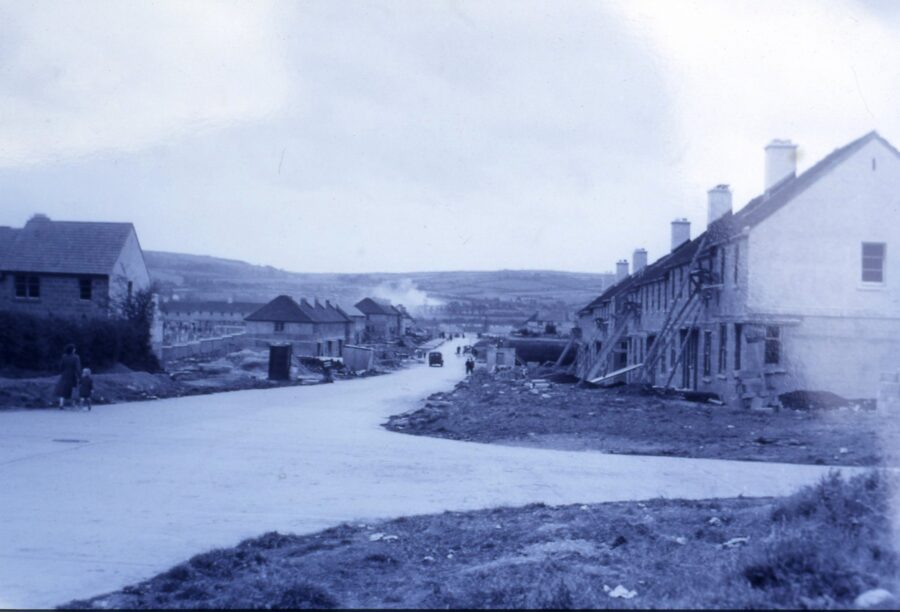
On the northside of the city, the lands known as Churchfield to the north of Gurranabraher were developed. In 1955, such was the extent of building in the suburbs that the Corporation decided to recognise the development outside the city boundary and, in conjunction with the county council, extended the municipal boundary by 856 acres.
The 1950s were also the time of one of the city’s most determined religious leaders, Bishop Lucey. He was appointed Bishop of Cork and Ross in 1954. He will be remembered principally for his dedication in establishing church-building schemes in Cork, resulting in the building of the Church of the Ascension at the Gurranabraher (1955) the Church of the Assumption Ballyphehane (1956), the Church of the Resurrection at Farranree (1958) the Church of the Descent of the Holy Spirit at Dennehy’s Cross, (1960) and the Church of the Way of the Cross at Togher (1972).
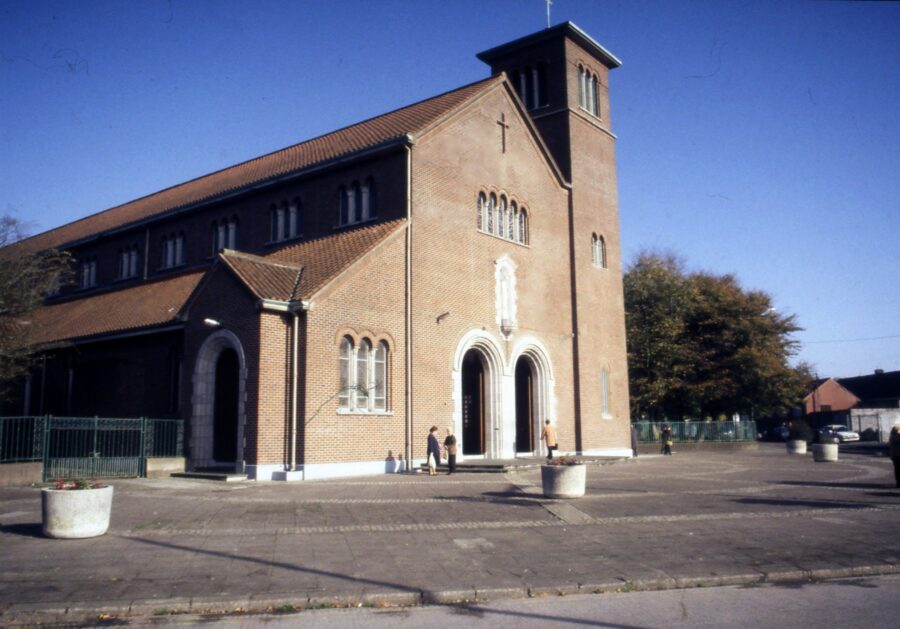
Today, the city’s central park is named after Bishop Lucey. The impressive entrance gates are those of the city’s nineteenth-century corn market, now marked by City Hall. Within the park, sections of the medieval town wall can be seen.
Culturally, the city enjoyed a varied and stimulating period in the 1950s, a time when many of Cork’s best-loved characters emerged in their various fields. Seán O’Riada was born in Cork in August 1931. He grew up and was educated in County Limerick but returned to UCC as a student in 1948 and studied his great passions, classics and music. He was employed by Radio Eireann as assistant music director, but left in 1956 to explore other musical cultures, eventually studying piano in Paris. He later penned national radio broadcasts entitled ‘Our Musical Heritage’.
In 1959, O’Riada produced his most well-known work, Mise Eire, a short film about Ireland’s struggle for freedom. His interpretation of Irish music proved his genius. He revitalised the traditional music scene, enriched the sound of traditional music and brought it to greater audiences. During the 1960s, his career went from strength to strength, creating scores for ‘Saorse’, ‘The Playboy of the Western World’ and ‘Young Cassidy’. His formation of the popular group Ceoltoirí Chulann brought a fresh approach to Irish music. In 1963, O’Riada was appointed lecturer at UCC. In 1968, his accomplishments were celebrated when he received the Irish Composer of the Year award in Belfast. O’Riada died in October 1971.
Of German origin, Aloys Fleischman became the centre of music in Cork for over fifty years, especially in the latter half of the twentieth century. He was professor of music in UCC, a conductor, scholar, teacher and composer who devoted his life and energies to the development of music and art in the city of Cork. He campaigned Cork Corporation to put music on the school curriculum and subsequently a School of Music was built.
Fleishman established the Cork Orchestral Society, which gave amateur musicians an opportunity to perform the great works to an appreciative audience. Fleischmann also directed and organised the Cork International Choral Festival, an event that gave local choirs, in particular in rural areas, a forum to compete against other choirs from home and abroad. For his duty the city, Aloys Fleischmann was conferred the freedom of the city in 1978
Joan Denise Moriarty was born in the 1920s and at a young age developed a love of dance, especially ballet. She trained in London and Paris to become a professional dancer, but due to illness she could not fulfil her dream. In 1941, she returned to Cork where she opened her own dance school in St. Patrick’s Street and formed the Cork Ballet Group, later the Cork Ballet Company. In 1959, Joan established the Irish Theatre Ballet, which went on tour nationally, but after five years financial problems forced it to close. At this time, the Irish government allocated funds or the establishment of the Irish National Ballet.
The 1950s also witnessed the rise to power of one of Cork’s favourite sons, Jack Lynch. Born in 1917, Lynch was a gifted sportsman. In the 1940s he played on the Cork All-Ireland minor and senior football teams, winning several All Ireland medals. His second passion was politics, and he stood for Fianna Fail in the 1946 bye-election, going on to serve as minister in the departments of Education and Industry and Commerce. In 1966, he succeeded Sean Lemass to become Taoiseach. He was a leading figure in the negotiating team that signed of the Treaty of Accession into the EEC – a move that initiated Ireland’s economic recovery and Celtic Tiger days. Lynch’s focus as Taoiseach was Northern Ireland, and he worked tirelessly towards a peaceful solution to the Troubles.
During the heyday of Jack Lynch’s ministerial days in the early 1960s, Cork was consolidating its position as the southern capital of Ireland. At the same time, an innovative national development strategywas devised to stimulate industrial growth and spatial re-distribution by means of a new policy of free trade and foreign investment. Cork’s existing industrial base, its urban infrastructures, the large labour force and ideal port facilities provided the context for significant growth in its manufacturing base. Within the county borough, chemical and engineering sectors also grew, especially at Ringaskiddy. Today, chemical industries such as Pfizers, ADM and SmithKline Beecham play a large role in Irish commerce and in Irish scientific research.
Cork Airport opened in 1961 and was Ireland’s third airport after Shannon and Dublin. This development opened up further European markets and early predictions in the early 1960s argued that 30,000 passengers per annum would be handled in the early years, reaching a target of 60,000 people per annum after five years. In fact, in that first year 75,000 passengers used the airport and this figure grew steadily to over 160,000 in 1967. Today, the passenger traffic of the airport exceeds 1.5 million per annum and continues to grow.
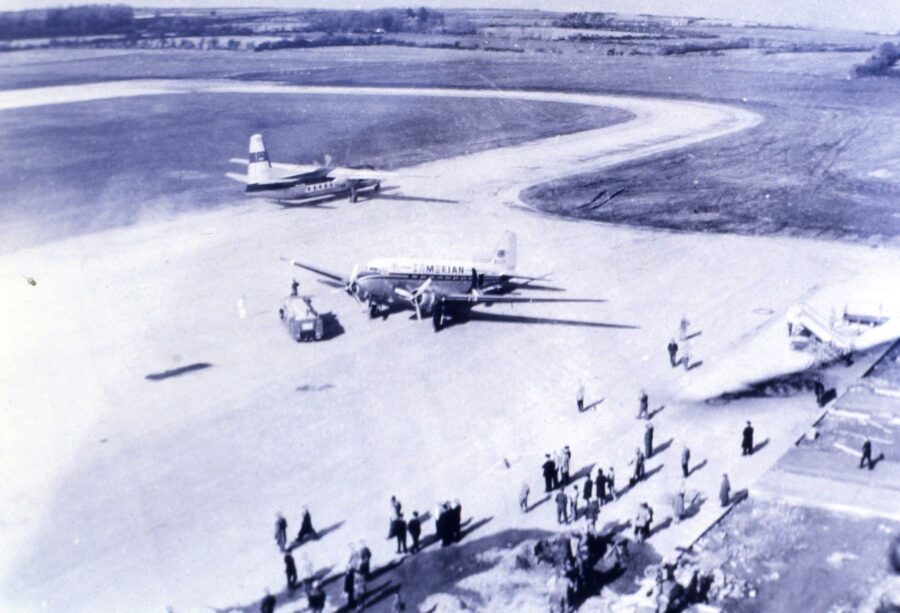
The attraction of new manufacturing industries to Cork meant an increase in the number of people living in the city. The population in 1961 was 115,689 and this escalated by nearly 10,000 to 125,283 in 1966. Thus in 1965, the city boundary expanded to the north and south yet again to allow for the development of the suburbs of the city. This time an area of 6,250 acres was encompassed. Since then the city boundary has remained fixed, comprising an area of approximately thirty-nine square kilometres.
In 1967, the first flats were built in the city, at Blackpool. The following year Cork Corporation proposed its first development plan, which followed the idea that more industry was good for the city and that cheap sub-standard housing would be an acceptable way of providing public housing. As a result, major housing schemes were constructed in Knocknaheeny (northside), Mayfield (northside) Mahon (northside) and Togher (southside) and new industrial estates such as Hollymount in Hollyhill (northside) were constructed.
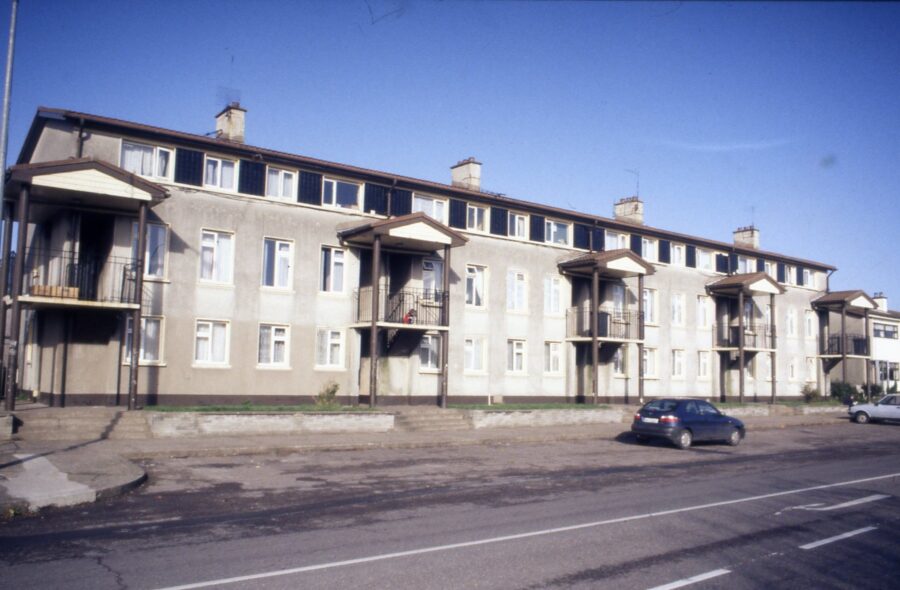
This model of cheap housing proved expensive in the end, as in the 1980s a recession caused the closure of several of Cork’s major employers, including Dunlops, Ranks (Ireland) Ltd, Fords, Verolme and Lunhams. Unemployment led to social problems within the large housing estates. The majority of people occupying these estates had thought their jobs were secure in the large manufacturing industries such as Fords or Dunlops.
The early 1970s, especially 1971, saw the population of Cork City rise by a further 10,000 people. In 1978, a coherent overall plan was eventually published regarding the future of land use and transport in the city. The main goals of the Land Utilisation and Transport Study, or LUTS, nearly all of which have been completed. As apart of LUTS, a downstream crossing was also proposed and opened in May 1998 at the Lee Tunnel, or to give it its official title, the Jack Lynch Tunnel. These routeways have dramatically altered the approaches to the city. LUTS also encouraged the construction of more bridges across the River Lee.
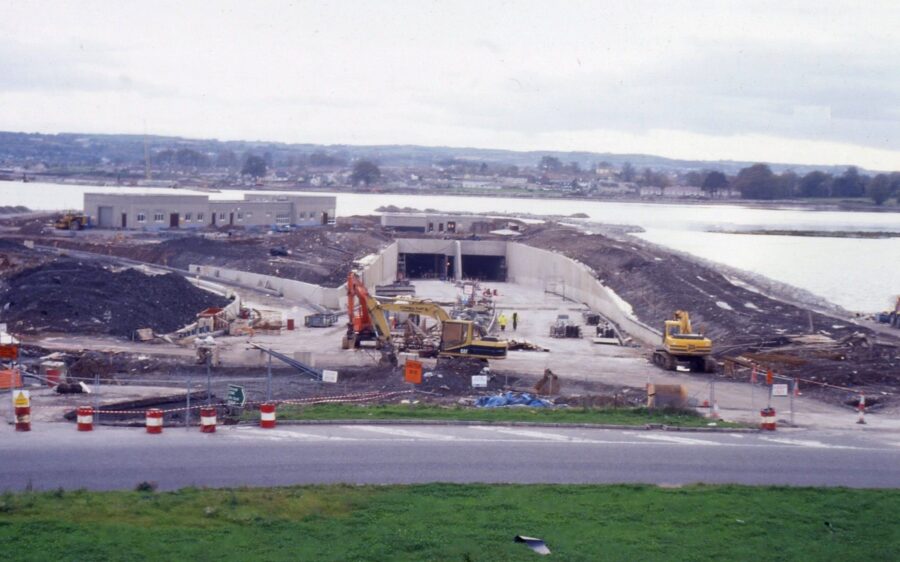
As part of the plan, two new concrete bridges, Eamon de Valera Bridge (south channel) and Michael Collins Bridge (north channel), opened in 1984. Other bridges constructed on the southern channel in the twentieth century include: Donavan’s Bridge (1900) after property speculator, Thomas Donavan; Brian Boru Bridge (1915); Trinity Footbridge (1977) and Nano Nagle Footbridge (1985). New Bridges on the North Channel include: Clontarf Bridge (1915); Daly’s Bridge (1926), more affectionately known as the Shaky Bridge and named after James Daly, butter merchant; and Christy Ring Bridge (1985).
In the late 1970s and early 1980s, new housing developments appeared at the Commons, Ballyvolane, Lota, Montenotte, Kilbarry, and Mahon. The first four areas were in the northern suburbs while Mahon was located in the southern suburbs. In the 1970s, three institutions were to open in the area in the south west of the city in the Wilton-Bishopstown area. Regional Technical College (1978), now the Cork Institute of Technology; Cork Regional Hospital (1979), now Cork University Hospital; and the offices of the Industrial Development Authority (IDA).
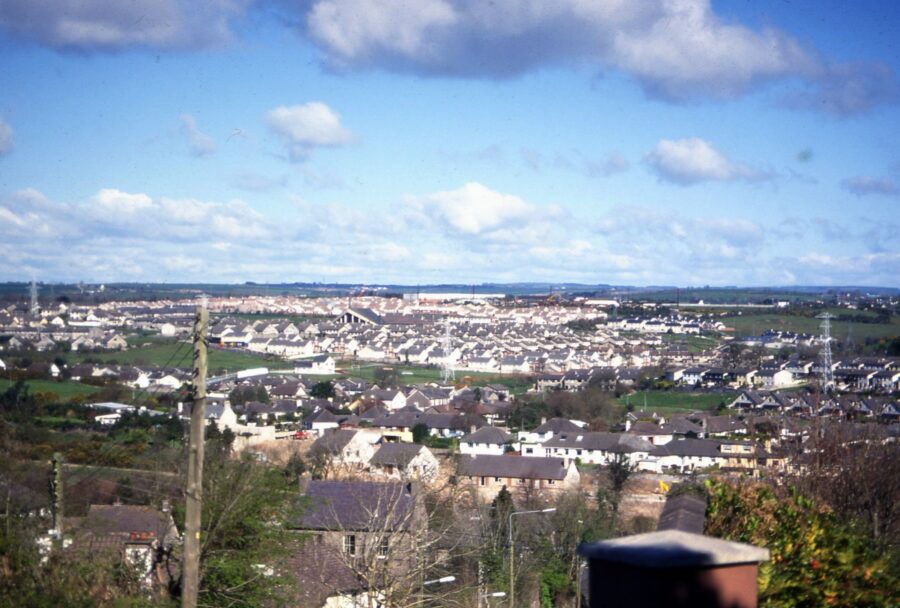
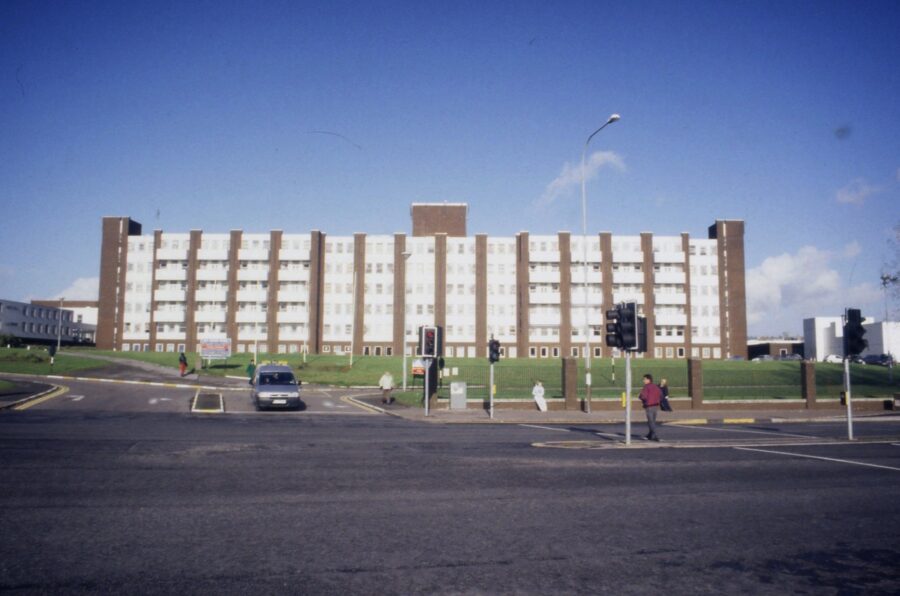
The mid-1990s coincided with Rochestown (southside) and Bishopstown (northside) being linked through the opening of the southwest link road in 1996. The last green areas between Cork and Ballincollig are being built on, which will eventually connect up this satellite town to the city, aided by the Ballincollig by-pass.
Alongside the rush to expand and improve is the equally important drive to conserve and retain. The Cork Historic Centre Action Plan aimed to increase business activity, refurbish properties and increase residential use of the city centre. North Main Street was chosen as the primary focus and a number of initiatives were completed. These included the initiation of a new shopping centre in the area; a ‘living over the shop’ scheme facilitated by the building of apartments over shops.
Other heritage projects included a large-scale archaeological dig prior to the construction of North Main Street Shopping Centre; the restoration of eighteenth-century houses at Fenn’s Quay and the restoration of St Peter’s Church, formerly one the medieval churches within the walled town. St Peter’s was adapted as the home of the Cork Vision Centre, with audio visual displays and presentations recording the evolution of the city. St Peter’s and the houses at Fenn’s Quay are some of over 450 protected historical buildings within the city today.

Read more and Explore more, 10. Twenty-First Century Cork | Cork Heritage
